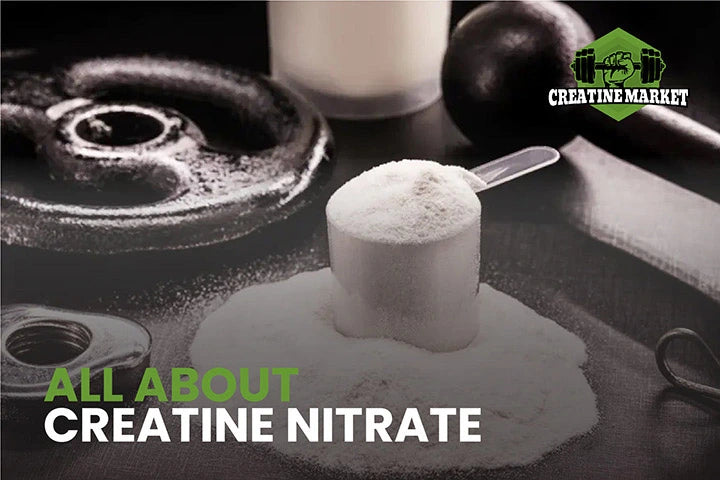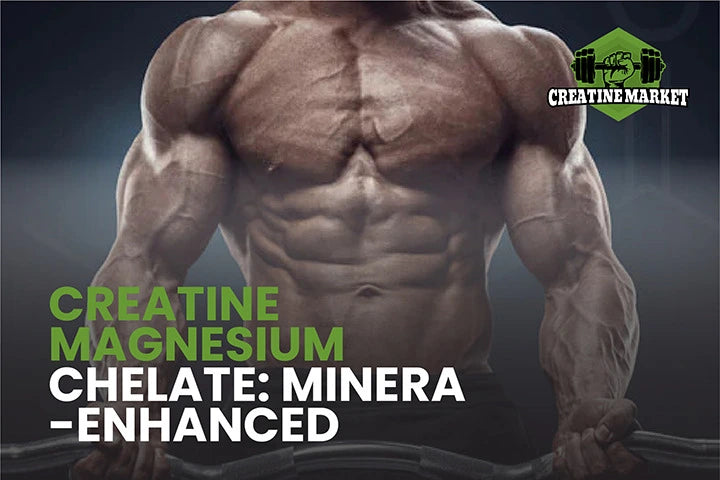When it comes to creatine types compared in the supplement industry, the variety of options can be overwhelming. From traditional creatine monohydrate to newer formulations like HCL and buffered creatine, each form claims unique benefits. If you feel overwhelmed, don't worry. Creatine Market will examine and compare all of the major forms of creatine, helping you make an informed decision about which type best suits your needs.
Understanding Different Forms of Creatine
Before diving into specific comparisons, it's essential to understand that all forms of creatine aim to achieve the same basic goal: increasing muscle creatine stores to enhance performance and muscle growth. However, each type approaches this goal differently, with varying levels of research support and effectiveness. Check out our blog on the different types of creatine for more information.
Creatine Monohydrate vs Creatine HCL
When comparing creatine monohydrate to HCL (hydrochloride), several key differences emerge. Creatine monohydrate represents the most studied and proven form, with decades of research supporting its effectiveness. Creatine HCL, on the other hand, offers potentially enhanced solubility and absorption.
Absorption and Dosing
Creatine monohydrate typically requires a 5-gram daily maintenance dose, while HCL advocates claim effectiveness at lower doses of 1.5-3 grams. This difference stems from HCL's supposedly superior absorption rates, though research supporting these claims remains limited.
Cost Effectiveness
Despite HCL's lower dosing requirements, creatine monohydrate generally provides better value for money. The price per serving of HCL often exceeds monohydrate by 3-4 times, even when accounting for smaller serving sizes.
Research Support
Monohydrate boasts extensive scientific backing, with hundreds of studies confirming its safety and efficacy. HCL, while promising, lacks the same depth of research validation.
Creatine Ethyl Ester vs Buffered Creatine
The comparison between creatine ethyl ester (CEE) and buffered creatine reveals interesting contrasts in their approaches to improved absorption and effectiveness.
Stability Differences
Buffered creatine maintains stability through pH modification, while CEE relies on esterification. Research suggests buffered creatine may retain its form better than CEE, which tends to convert to creatinine more rapidly.
Absorption Mechanisms
CEE was designed to enhance absorption through improved cell membrane penetration. Buffered creatine aims to achieve better absorption by resisting breakdown in stomach acid. Current evidence suggests buffered creatine may have a slight edge in maintaining stability.
User Experience
Many users report that buffered creatine causes less digestive discomfort compared to CEE. The bitter taste of CEE can also make it less palatable for some users.
Buffered Creatine vs Creatine Monohydrate
This comparison pits the innovative pH-modified approach against the tried-and-true standard of creatine supplementation.
pH Stability
Buffered creatine's elevated pH theoretically provides better stability in the digestive system. However, research indicates that stomach acid likely neutralizes this advantage, making the practical benefits questionable.
Performance Results
Studies comparing these forms show similar strength and muscle gains, suggesting that the pH modification may not translate to superior results. Creatine monohydrate maintains its position as the gold standard due to its proven track record and cost-effectiveness.
Dosing Requirements
While buffered creatine suggests lower effective doses, research hasn't demonstrated significant advantages over monohydrate's standard dosing protocol.
Creatine HCL vs Buffered Creatine
These two modified forms take different approaches to improving creatine's effectiveness, each with distinct characteristics.
Solubility Comparison
HCL demonstrates superior solubility compared to buffered creatine, mixing more easily in water. This property may enhance user experience, though it doesn't necessarily indicate better effectiveness.
Stomach Comfort
Both forms claim to reduce digestive issues compared to monohydrate. Users report similar comfort levels with both variations, suggesting neither holds a clear advantage in this area.
Cost Analysis
Both options command premium prices compared to monohydrate. The choice between them often comes down to individual response and preference rather than clear superiority of one form.
Creatine Ethyl Ester vs Creatine HCL
These modified forms represent different attempts to enhance creatine's absorption and effectiveness.
Absorption Mechanisms
HCL relies on acid-enhanced absorption, while CEE uses esterification to improve cellular uptake. Current research suggests HCL may maintain better stability and effectiveness compared to CEE.
Taste and Mixability
HCL typically offers better mixing properties and a less bitter taste than CEE. This practical advantage can impact user compliance and satisfaction.
Research Comparison
Neither form matches monohydrate's research backing, though HCL has shown more promising results in limited studies compared to CEE.
Organic vs. Synthetic Creatine
The debate between organic and synthetic creatine sources raises important considerations about production methods and effectiveness.
Production Methods
Synthetic creatine undergoes controlled laboratory production, ensuring consistent purity and potency. Organic creatine, derived from natural sources, may vary in concentration and quality.
Environmental Impact
Organic production methods generally have a lower environmental impact but result in higher costs. Synthetic production offers cost advantages but may raise sustainability concerns.
Effectiveness Comparison
Research shows no significant difference in effectiveness between organic and synthetic creatine when purity standards are met. The choice often reflects personal values rather than performance benefits.
Creatine Nitrate vs Creatine Monohydrate
The comparison between creatine nitrate and creatine monohydrate presents an interesting contrast between a novel formulation and the established standard. Creatine nitrate combines traditional creatine with nitrate groups, aiming to provide dual benefits through both creatine supplementation and nitric oxide production.
Solubility and Absorption
Creatine nitrate demonstrates superior water solubility compared to monohydrate, dissolving more completely in liquids. This enhanced solubility theoretically improves absorption, though research has yet to definitively prove better muscle uptake. The addition of nitrate groups may also support better vasodilation through increased nitric oxide production, potentially enhancing nutrient delivery to muscles.
Dosing Considerations
While creatine monohydrate typically requires a 5-gram daily maintenance dose, creatine nitrate is often recommended at lower doses due to its supposed enhanced absorption. However, these lower dosing recommendations are primarily based on theoretical benefits rather than conclusive research. The nitrate component may provide additional performance benefits, but this requires careful consideration of total nitrate intake from all sources.
Performance Benefits
Creatine monohydrate's performance benefits are well-documented through extensive research. Creatine nitrate, while promising, lacks the same depth of scientific validation. The potential advantage of creatine nitrate lies in its dual-action approach: combining the strength and power benefits of creatine with the improved blood flow effects of nitrates. However, these theoretical benefits must be weighed against the significantly higher cost and limited research backing.
Cost and Value
Creatine nitrate typically costs significantly more than monohydrate, often 3-5 times the price per serving. While the dual-action benefits might justify this premium for some users, the lack of definitive research showing superior results makes it difficult to justify the additional expense for most individuals. Monohydrate continues to provide the most cost-effective and proven benefits.
Safety and Side Effects
Creatine monohydrate has a well-established safety profile with decades of research supporting its use. Creatine nitrate, while generally considered safe, requires more long-term studies to fully understand its safety profile. Users should be particularly mindful of their total nitrate intake when using this form, especially if consuming other nitrate-containing supplements or foods.
Practical Considerations
The superior solubility of creatine nitrate may appeal to users who dislike the grittiness sometimes associated with monohydrate. However, this improved mixing quality comes at a significant price premium. Additionally, the nitrate component may provide benefits for users specifically seeking enhanced pumps or vasodilation during workouts, though these same benefits could be achieved by combining standard monohydrate with separate nitrate supplements at a potentially lower cost.
Conclusion
After comparing all forms of creatine, creatine monohydrate emerges as the most reliable and cost-effective option for most users. While newer forms offer theoretical advantages, they generally fail to demonstrate significant benefits over monohydrate in research settings.
However, individual responses can vary, and some users may find specific benefits in alternative forms. The most important factor remains consistency in supplementation, regardless of the form chosen.
Consider starting with monohydrate due to its proven track record and value. If you experience issues or prefer trying other forms, HCL and buffered creatine represent the next best options based on current research and user experiences.
Remember that supplement choice represents just one factor in achieving your fitness goals. Focus on proper training, nutrition, and recovery while using your chosen form of creatine consistently for optimal results.




